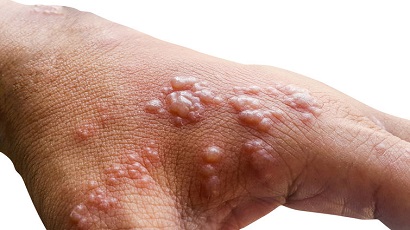The cases in Oregon are all among men
Health officials are emphasizing information-sharing, testing, vaccination and treatment as part of Oregon’s response to a national outbreak of hMPXV -- human monkeypox virus -- that includes at least six cases in the state.
The cases in Oregon are all among men -- one in Multnomah County, confirmed June 16 -- two confirmed July 1 and one confirmed July 6 in Lane County -- and two in Washington County, confirmed July 6. There have been no deaths.
According to a
Monkeypox Report released by the Oregon Health Authority, Monkeypox is a rare disease caused by infection with monkeypox virus (MPXV). The Orthopoxvirus genus, which includes MPXV, also includes variola virus (which causes smallpox), vaccinia virus, and cowpox virus. Historically, it has been a zoonotic disease -- transmitted from animals to humans -- and is endemic to forested areas of Central and West Africa. It is unclear which animals are reservoirs for monkeypox, however, rodents in endemic areas appear to be likely candidates.
The name stems from the first recognized outbreak, in monkeys in a Danish laboratory in 1958. The first human case was identified in 1970 in the Democratic Republic of the Congo. In May 2022, monkeypox emerged in humans in several countries without enzootic or endemic disease. The federal Centers for Disease Control maintains a
list of these countries.
The distinctive rash is typically preceded by a prodrome of fever, headache, and muscle aches, however in the 2022 outbreak, many cases have not reported prodromal symptoms. Lymphadenopathy is common and is a distinctive feature of monkeypox, compared to other common febrile rash illnesses. The prodrome is followed within 1–3 days by a rash, often on the face, spreading to the trunk and limbs. The rash evolves through several stages — starting with flat macules or patches that progress to firm, deep-seated papules, which then may fill with fluid or pus, and eventually scab and fall off. Lesions can display umbilication. Lesions typically develop simultaneously and evolve together on any given part of the body. The illness typically lasts 2–4 weeks.
A D V E R T I S E M E N T

A D V E R T I S E M E N T
Historically, transmission has often resulted from animal exposure in endemic areas. Human-to-human spread is from direct or indirect contact with body lesions, including skin-to-skin contact with lesions, contact with contaminated objects such as towels, bedding, or other fomites containing such fluids, or potentially from large respiratory droplets. Transmission risk is low (basic reproduction number ~2) and usually requires close, prolonged contact.
--Staff Reports| Post Date: 2022-07-11 17:19:50 | |







